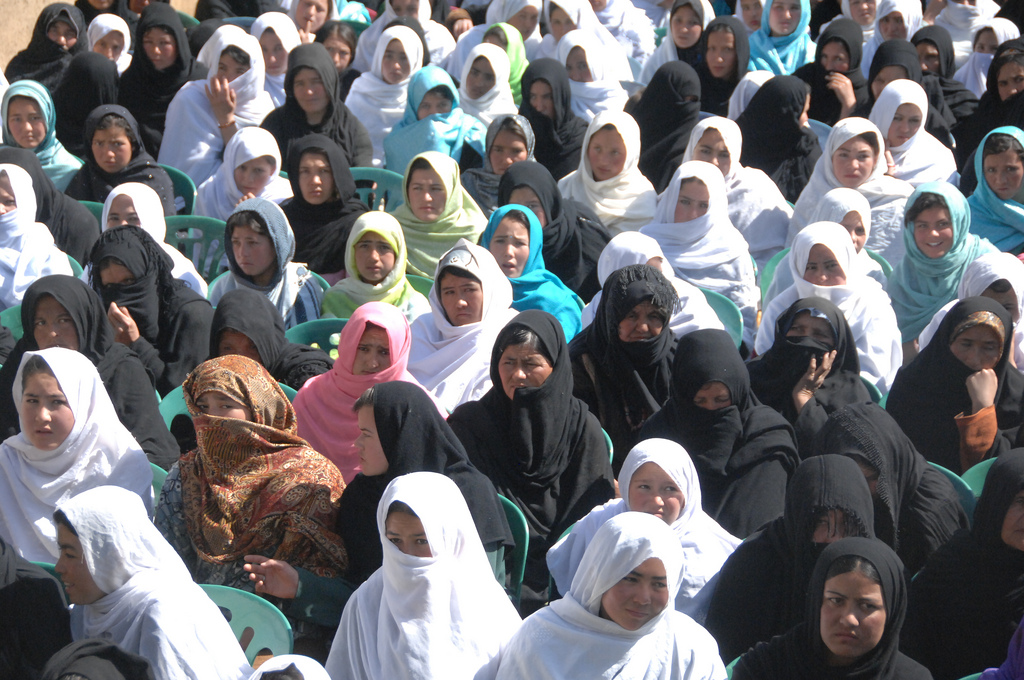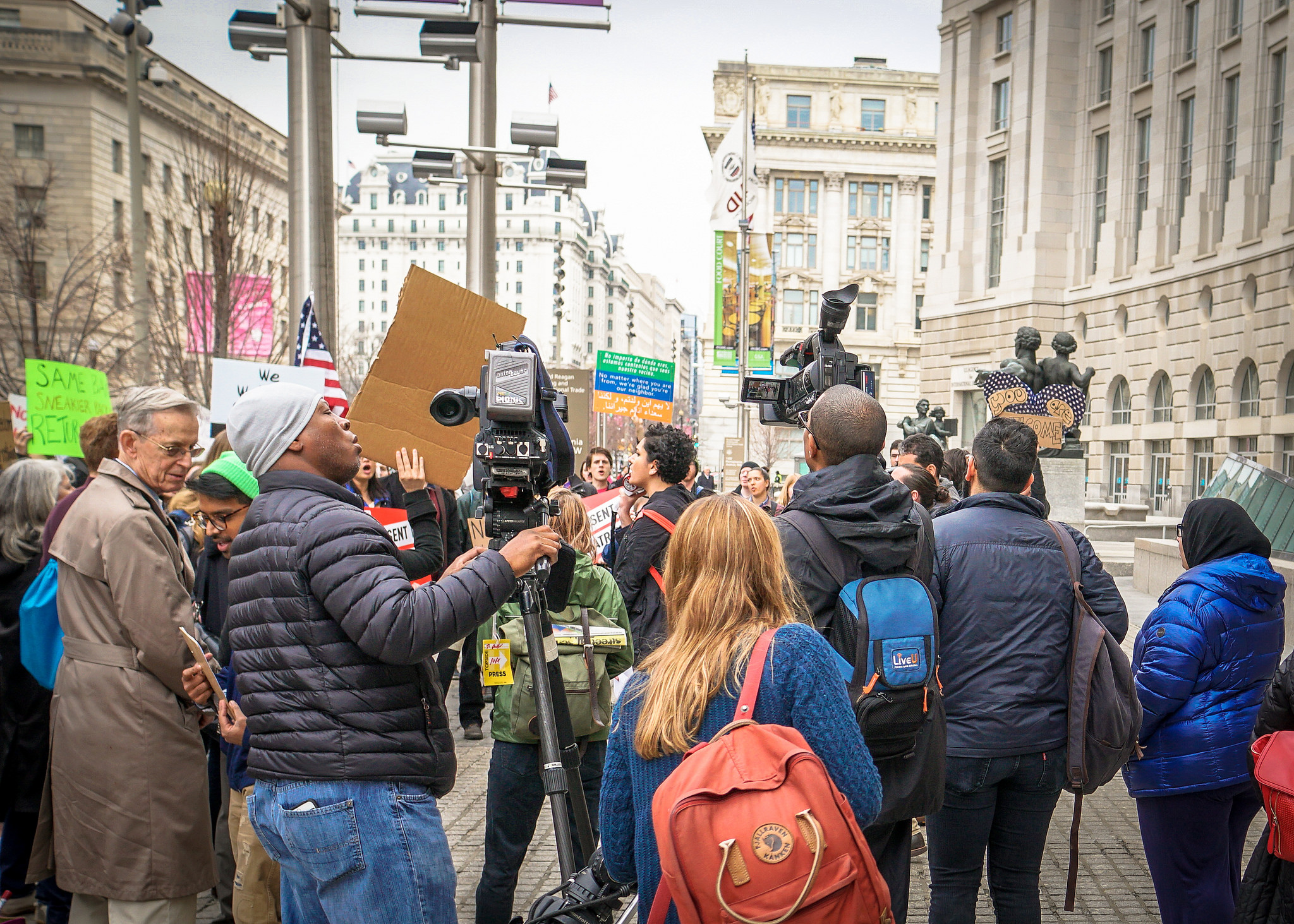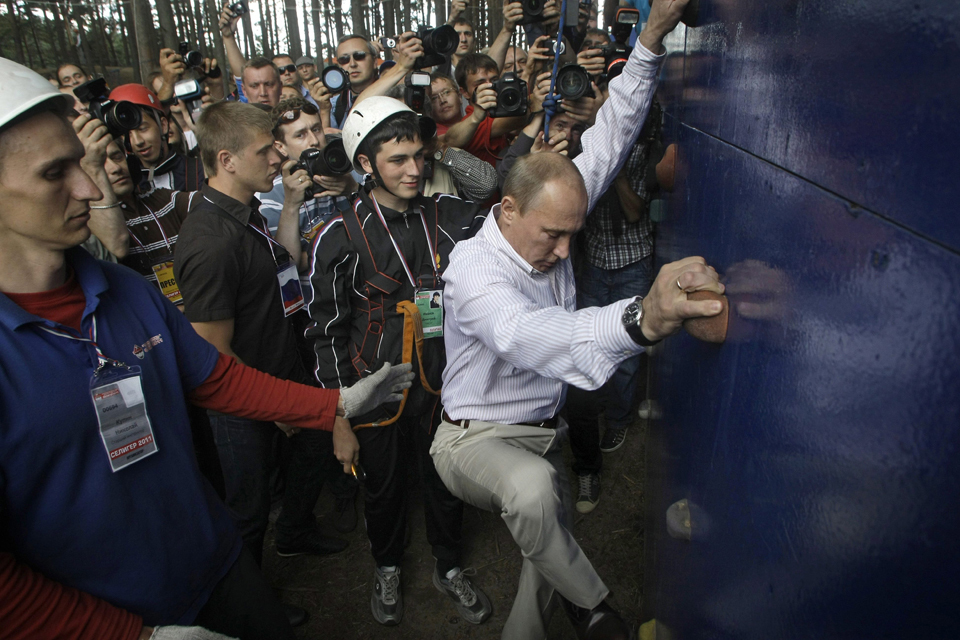
On January 24th Barbara Walter wrote a fascinating blog entry entitled “The Text that Changed the World”. It noted that the “Ukrainian government” had issued a text message to “thousands of protesters” effectively telling them that they had been busted (i.e., they were identified as participating in a protest event). While it is useful to think about the impact of this action on subsequent challenging behavior, given my interest in the end of repressive action it seemed useful to reflect for a moment as to how the text might be relevant. At the bottom of this post I provide a list of the major events over two plus months of protest, but here let me note that the text message Walter writes about was but one in a series of repressive tactics, each of which was met with counter-tactics by the protesters. Unfortunately, Walter’s post abstracts the text out of this context and what seems like an innovation of a relatively strong, capable and innovative government is really a weak, inept and desperate one.
Against that backdrop, January 21st was a busy day in which protests against the Ukraine government continued. That is when the government sent the text that “changed everything” (“Dear subscriber, you are registered as a participant in a mass riot”). Yet, note the response from people on the ground. One individual quoted by the Guardian on-site said:
I think these texts are stupid and are targeting people who are easily scared. They are not going to scare off the people who are already protesting.
The Guardian article also notes:
It was not immediately clear how the messages had been distributed. The interior ministry denied involvement, though said it was studying video footage to determine the most “active participants” in the riots and arrest them.
Telephone provider MTS issued a statement saying it had not been responsible for sending out the messages. “Today we started receiving complaints from users in central Kiev who all received SMS messages from the number 111, containing identical text. We have nothing to do with the distribution.”
Then the conflict continued.
January 22, Ukrainian opposition issues ultimatum to President Viktor Yanukovych (‘you have 24 hours’).
Kiev protests intensify on Ukraine’s Day of National Unity.
Two dead in protest.
January 23, protesters call truce.
January 25, Ukrainian anti-government protesters try to seize energy ministry.
Yanukovych offers opposition leaders top posts in attempt to defuse stand-off.
Riots continue in Ukraine.
So, did the text change everything? Did it change anything? I would argue, No. The government started their response with overt, slightly brutal physicality – pushing, beating and so forth. When that did not work, they moved to surrounding protesters, then to more pushing. Still the challenge continued. This prompted an attempted payoff facilitated by Russia in order to compensate the country for not moving towards the EU, which is associated with development and democratization. The conflict still continued.
In response to this, the government attempted another tactic and increased the costs of mobilization by criminalizing protest behavior, in turn attempting to legitimize the government’s response to the mass disturbance. This removed some of the challengers’ steam and over time, the less committed protesters appeared to leave the challenge.
A hardcore group persisted, however, which shifted tactics in order to respond to the government’s activities. With the hardcore remaining, challengers and government agents continued to clash and in this context political authorities allegedly sent the text. This represented yet another tactic employed by the government, but it did not signal the end of the government’s other strategies.
The next day government displacement was called for (the most radical of claims according to William Gamson), protest escalated again and two protesters ended up dead (the ultimate form of state repression). Following this, a truce was requested by some protesters, while others tried to seize a ministry. Ukraine’s president then attempted to accommodate the challengers by offering their leader a seat at the table. They said “No” and continued, which is essentially where we are at present.
Seen in this light, the text does not represent a brand new day of repressive action. The world has not changed. Rather, it represents the latest version of an old technique: attempt to raise the cost of mobilization through intimidation. Feign awareness of things not really known in an effort to cower one’s opponents. It’s like the US government bragging that it had thousands of ghetto informants in the black community as it attempted to figure out where the riots of the 1960s came from or the East German government claiming to have a high percentage of the population on the take, backed only by government document that supported the claim. The government tells you that it knows who you are – the political “I know what you did last winter.” What then? This is unclear.
To understand the meaning of the tactic, the text should not be viewed apart from the other tactics employed or their sequence of application (e.g., the raids, the beatings, the surrounding, the payoffs, the attempted accommodation). They are all part of the state’s repertoire. To understand repressive endings, we need to view all of the tactics at once – lest we confuse a tactical application or tactical shift with a conflictual termination.
Now, I would suggest that the world would be changed if the text is all the government did or if they started with the text. The Ukrainian government apparently has never taken a course on protest and protest policing for the texting is most likely effective at the beginning of a conflict cycle and not after the radical flank effect has kicked in (i.e., when a mobilization effort has been largely taken over by an extremely committed, highly radicalized/violent group of individuals). These individuals are not likely to be deterred by a text. Actually, they are not likely to be deterred by much of anything at the point it was employed – including death. Indeed, I would argue that the text is a signal of weakness and not strength. E-repression is likely a weapon of the incapable – seeking a technological answer to a problem that is otherwise unanswerable.
What’s next? Well, we might expect the Ukrainian government to send a picture via Instagram and Snapchat (especially the latter as it would disappear after a while, further obscuring who was responsible). Alternatively, they might establish a YouTube channel or create a Ukrainian song list on Pandora. In short, we need to be on the look out for old contentious wines in new E-bottles. Now what any of this has to do with improved economic inequality, employment, life satisfaction, infant mortality and the like – getting to the root importance of contentious politics? That is for another time.
A Brief Log of Protest and Protest Policing/State Repression in Ukraine
November 21, President Viktor Yanukovych officially announced that Ukraine would not sign the long-awaited integration pact with the EU.
This immediately leads to protest.
November 26, government crackdown.
Protest continues.
November 30, violent government crackdown.
December 1, EU summit leads to more protest.
Police chased away.
December 2, protesters and police clash.
December 3, protests grow.
December 4, mediator comes in.
December 4-7, protesters dig in.
December 8, challenger-government standoff.
December 9, Lenin statue goes down.
George Clooney sends video message of support to protesters.
What’s the deal with taking down statues, anyway?
Police move in.
December 10, police surround protesters.
December 11, protesters rebuild barricade that was previously taken down.
Assault-baton wielding cops go a little buck wild.
Popular outrage is directed at government attacks.
December 13, more people are on their way to protest after President Yanukovych promises moratorium on violence.
December 15, 200,000 step out demanding change and closer ties to EU.
John McCain chimes in with support.
December 16, Russia seems to offer some financial help to the government (seemingly to offset the losses of the EU).
Protesters appear to tell the government: “you suck” but there is also a pro-government rally.
Is Vitali Klitschko the new Muhammad Ali?
December 17, Putin offers financial incentive to stick with Russia.
December 26, especially brutal anti-protest beating prompts further protest.
December 29, smaller, but still large, protest occurs.
January 11, protesters clash with police.
January 16, Ukrainian parliament passes restrictive legislation regarding protest.
January 17, President Yanukovych signs laws severely restricting demonstrations.
January 18, crowds turn against protest leadership, desire tactical change.
January 19, anti-government protests escalate.
Police crackdown.
January 20, Ukrainian police and protesters clash violently for second day.
January 21, Text and other events discussed above.








4 comments
Thanks for an excellent post. I enjoyed Barb’s commentary, but thought it got the underlying issues a bit wrong. This is a great clarification.
As I mentioned in an earlier article on this subject, I thought the text message was a deliberate provocation. It’s to the advantage of the government to cause the protesters to act badly (that is, more violently), which will exacerbate the quasi-ethnic tensions which exist between east and west Ukraine. If, as has been said by some, the most hard-core protesters come from a fascistic and anti-Semitic tradition, and this can be made overt, so much the better, from the government point of view. Hence I would guess the texting thing was evidence of neither strength nor weakness, but was just an ordinary move in the game.
For the life of me I still can’t see how the Ukrainian government would get an advantage from this. The military actually declared it would remain neutral and the police pretty clearly haven’t been able to succeed in crackdowns.
Are you writing with experience based on another government doing something similar within the past decade or so?
Jorge – I’m a big agent provocateur guy but how does the text provoke bad activity? Fear is most likely the desired prompt. At the point of the text in the sequence, it was not to the advantage to provoke more violence, among the hardcore. The text as a “move in the game” is a signal in part because it was something that had previously not been attempted. I think it signals weakness because the government had to shift tactics.